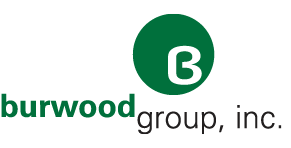Want Enterprise-Level Talent and Productivity? Focus On Integrated Collaboration Technology
Many innovative, successful enterprises aim for an ‘anytime, anywhere’ work ethos. But you will need more than just a flexible work policy to achieve the future-of-work ideal. Whether employees are sitting together in a conference room or hanging out in a coffee shop, a coworking space, an airport lounge, or simply their own living rooms, you’ll need an integrated approach for your collaboration technology.
From phone systems and messaging platforms to cloud-enabled videoconferencing, communications technology can bring people together no matter where they are. And since roughly 70 percent of employees work remotely at least once a week, connecting across distance is critical.
An integrated voice and application strategy can also be a weapon in the war for talent. The next generation of workers expects their workplace technologies to offer the same level of quality as the tools they use at home. Delivering on these expectations goes a long way toward talent recruitment and retention, along with boosting productivity and innovation through collaboration.
What does a modern voice and application platform look like?
It’s been a long time since a simple instant messenger app was an adequate means of real-time virtual communication. Modern communications platforms represent a convergence of phone systems, voicemail, video, messaging, and data in a shared IP-based infrastructure.
By integrating real-time and asynchronous communication services, your IT team can help eliminate the tedious communication elements, such as phone tags or endless email strings. You can satisfy even the most demanding workers with seamless, integrated voice, video, and messaging services.
Improved team member satisfaction, user collaboration, and strategic potential can justify the investment in integrated voice and application systems. Examples include:
Young, tech-savvy candidates might appreciate virtual recruiting, encompassing everything from online tours and webinars to virtual company conversations.
A C-suite executive in negotiations with a remote partner can leverage video-conferencing tools that enable them to read non-verbal cues. During the meeting, they can use collaboration workstreams and message boards to ensure no one misses a beat.
Replacing a legacy phone system is an opportunity to lay the foundation for a comprehensive collaboration solution with improved security, increased availability, centralized systems, and failover capabilities. It could also be an opportunity to advance your cloud migration goals.
Is now the time to consider a more powerful communications strategy?
Selecting and implementing the right collaboration technology can make business interactions more meaningful, efficient, and effective. The strategy, however, requires some serious consideration of how your end-users interact and what kinds of solutions are best for your environment.
For instance, how do employees in different departments communicate with each other today? What would they prefer? What do best-in-class vendors like Cisco, Microsoft, RingCentral, and others have to offer? And, have you assessed whether the cloud should be part of your communications technology strategy?
There’s no single way to bring voice and other communications tools together under one umbrella. By working with a partner to understand what your current devices look like today and where you would like to be, your team can lay out a roadmap to improvement that aligns with your unique organizational goals.





